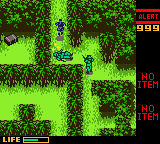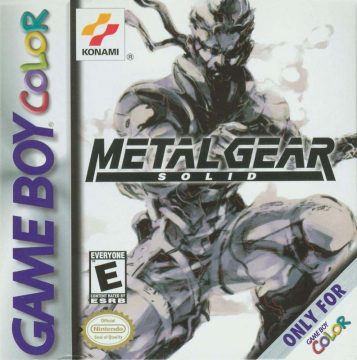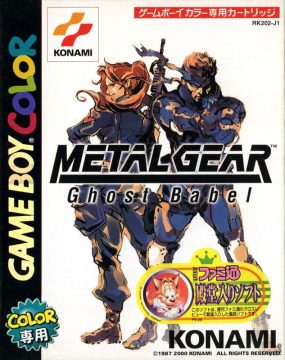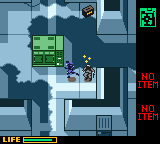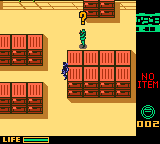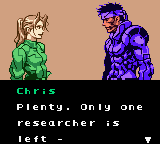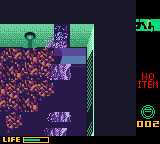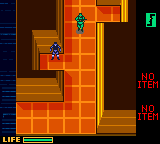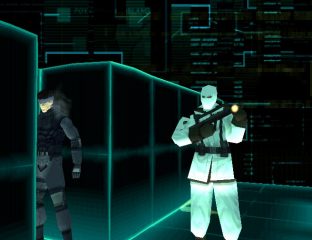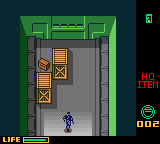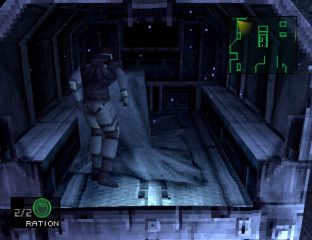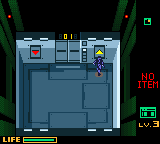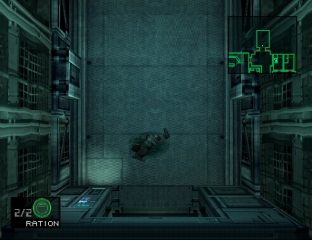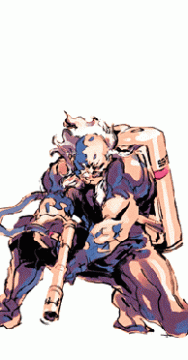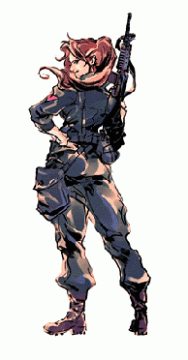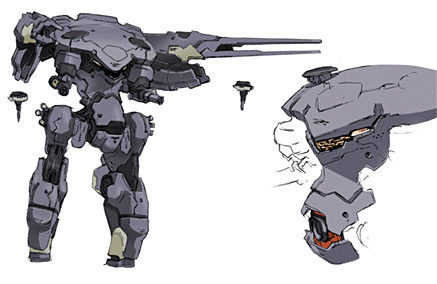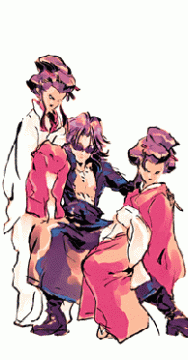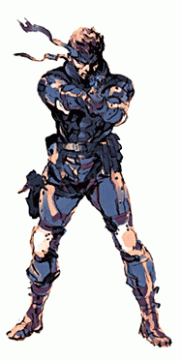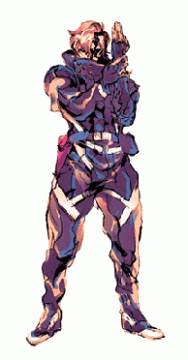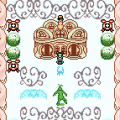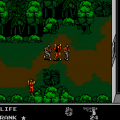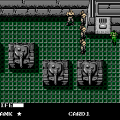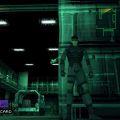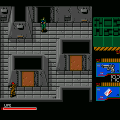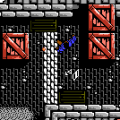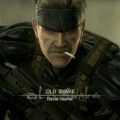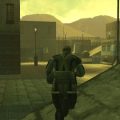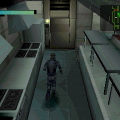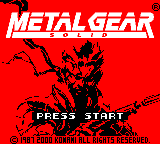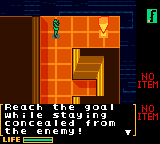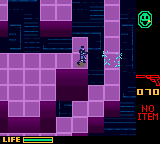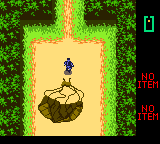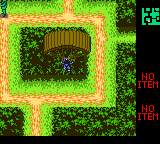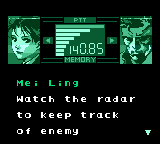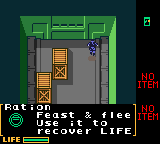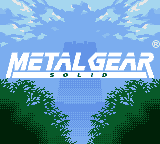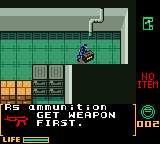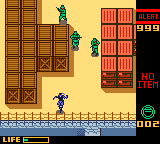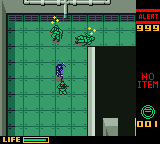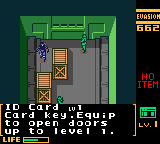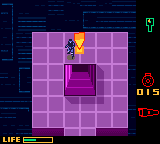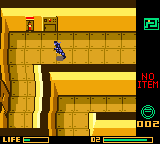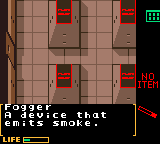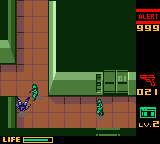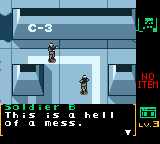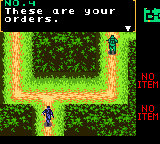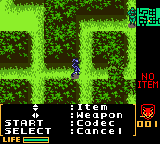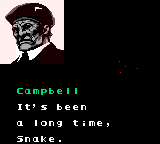- Metal Gear
- Snake’s Revenge
- Metal Gear 2: Solid Snake
- Metal Gear Solid
- Metal Gear Solid Integral Staff Commentary
- Metal Gear Solid (Game Boy Color)
- Metal Gear Solid 2: Sons of Liberty
- Document of Metal Gear Solid 2, The
- Metal Gear Solid: The Twin Snakes
- Metal Gear Solid 3: Snake Eater
- Metal Gear Solid 4: Guns of the Patriots
- Metal Gear Solid: Portable Ops
- Metal Gear Solid: Peace Walker
- Metal Gear Solid V: Ground Zeroes
- Metal Gear Solid V: The Phantom Pain
- Metal Gear Rising: Revengeance
- Metal Gear Touch
- Metal Gear Acid
- Metal Gear Acid 2
- Metal Gear Solid Mobile
After the release of Metal Gear Solid on the PlayStation, everyone wanted more Metal Gear. That included Konami’s Eurpoean branch, who requested a portable version of the game to capitalize on its success. With the help of TOSE, the prolific ghost developers based in Kyoto, Japan, Konami Computer Entertainment Japan (KCEJ) set out to come up with just that, creating the first portable entry in the series. Instead of shrinking the PS1 original down, they crafted a new scenario for the game and made it every bit as full featured as the PS1 game, while looking like its 8-bit origins. Metal Gear: Ghost Babel (or Metal Gear Solid outside of Japan), far from a quick cash in on the series’ popularity, stands head & shoulders with its bigger siblings, despite the portable format.
The story branches off from the end of the original Metal Gear on the MSX2. Gindra, a fictional African nation that absolutely bares no resemblance to South Africa, is in the middle of a civil war, and a militant group called Gindra Liberation Force have stolen a new Metal Gear prototype, codenamed Gander, to turn the tides. As usual, Solid Snake is called out of retirement by Colonel Campbell to infiltrate their headquarters in Galuade, or as it was originally called, Outer Heaven, and put a stop to the new Metal Gear menace. Chris Jenner, the surviving member of an assault force that failed to retrieve the mech, joins up with him, fulfilling a similar role to Meryl in the PS1 version. Black Chamber is the name of the rogue’s gallery that Snake faces on this mission, including a pyromaniac with a big ol’ flamethrower backpack and a sharp-eyed former serial killer often accompanied by two puppets dressed up. Despite this colorful cast of villains and the series’ penchant for violence remaining intact, the game got an “E for Everyone” rating in North America. It, at least, gets Snake to put the cigarettes away. Instead, Snake reveals laser trip wires with a “Fogger”. While the story is not considered canon, there’s a comment made by the Colonel at the end of the game, stating that it’s a training sim for someone named Jack (the real name of Raiden in MGS2) and one of the many weapons in MGS4 is the Five-seveN pistol, the same one that Snake uses in Ghost Babel.
While the PS1 classic updated the series to the third dimension, Ghost Babel brings many of those additions back to the second dimension. Every button of the Game Boy Color is employed, some in unique ways. The Start Button, for instance, makes Snake crouch. Pausing the game is done by the Select button, where players can also switch items & weapons or fire up the CODEC. Snake can aim in eight directions now, up from being limited to cardinal ones in his earlier outings. What’s more, he can slide along walls and knock on them to grab guards attention, new to the 2D design of the series. Most of the weapons – excluding the sniper rifle and Stinger missiles – return. The developers even fit the Soliton radar into the game, working remarkably well despite being shrunk down & lacking cones of vision on enemies. Mei Ling returns to save the game and offer aphorisms of support. Despite being built for the Game Boy, Ghost Babel feels like a larger game than the MSX2 or NES ones. Its thirteen stages, while more linear, are expansive, with less flipping to a new screen. This opens up the ability to scroll the camera around and see farther ahead, something that wasn’t possible on the 8-bit titles. The game also provides some interesting mechanical variety to the stages. Snake has to navigate through a floor of electrified puddles or conveyor belts to progress.
After finishing the game once, the game offers a stage select with a twist. New challenges are added to the old stages, three for each stage. Players might be asked to speed run a stage, to collect FOXHOUND emblems, or to finish it without taking damage. There’s a variety of these challenges. One challenge fills a stage with ghosts who need to be sent to the next world, and another straps a bomb to Snake that explodes if he stands still for more than a second, making him a human version of the bus from Speed. What’s more, replaying stages adds more story. The player is cast as a nameless agent – strongly hinted at as being a certain other protagonist in the series – experiencing Snake’s mission in VR, with the new details being imparted by the mysterious No. 4. And of course, VR Missions return with a small variety of stages to complete. Some levels from the PS1 version were redone in this new 2D format, with many others being original creations. The game also featured a competitive multiplayer mode via Game Link Cable, a first for the series. Two players go after a series of drones in order to grab data disks that unlock the goal. The first player to reach the goal wins. Much like the Genome soldiers’ own view, competitors only see the other player when in each other’s cone of vision.
The game plays well, but it also has some issues. Hitboxes can feel inconsistent around Snake. Sometimes soldiers will whiff a hit right beside him, and other times they’ll clock him from a range of several pixels. The game can also suffer under the weight of its ambitions. The large levels can be confusing to navigate sometimes, with lots of areas lacking clear landmarks. There’s also no denying that the withered technology of the Game Boy Color has its limits. Played on physical hardware, with its unlit, tiny TFT LCD screen, the Soliton Radar is an eye-strain, as impressive as the functionality is.
The most unique addition didn’t make it into the North American release. IdeaSpy 2.5, a spy thriller radio drama with a satirical bent, is embedded in a hidden codec frequency on a successive playthrough (140.07, just like the hidden commentary in MGS Integral.) Written by Shuyo Murata, it tells the story of a secret spy called 2.5 employed by the FBI to stop the corrupt J.E. (Junker Expensive) Corporation from ripping people off by selling inferior, busted products in New York City. Each of the game’s 13 stages contains a different episode in the story. An English translation was included on the European release, thanks to the larger 32mb cart used to store the other necessary languages for the territory, but small cart used for the North American version meant it had to be cut to save space. This drama was Murata’s first credit in the series, and he would later go on to contribute to Metal Gear Solid 3, Peace Walker, and others. Kojima had it adapted for his Japanese language podcast, HIDECHAN! Radio, in 2006. Naturally, the ever-humble director was cast in the lead role.
The game resembles the MSX2 entries, as to be expected, but with the expected limitations of the Game Boy Color. Ikuya Nakamura, who previously worked on art & design for the PS1 game, returns as the graphics designer, adapting Yoji Shinkawa’s character designs to the much smaller format. There are some unique effects employed, like alternating sprites to create the rushing water effect in the sewers that can’t fully be captured in screenshots. The portraits in Ghost Babel for Snake and Campbell were reused for the updated version of Metal Gear 2 released on mobile phones and as part of Metal Gear Solid 3 Subsistence, in place of the original celebrity impersonations. The soundtrack was handled by Norihiko Hibino, the first of many times the Berklee College of Music graduate would contribute music to the series.
Metal Gear: Ghost Babel is an ambitious game, and that ambition pays off. The game feels wonderful to play, its design adapts much of its big sibling into a bite-sized format, and the story’s every bit as compelling and dramatic as the best in the series. It’s a shame that it hasn’t been re-released in any capacity, either. And that’s without factoring in the potential knock-off and fakes that plague the retro market. The game remains a forgotten classic in the series, most of all by Konami themselves.
VR Missions Screenshot Comparisons
